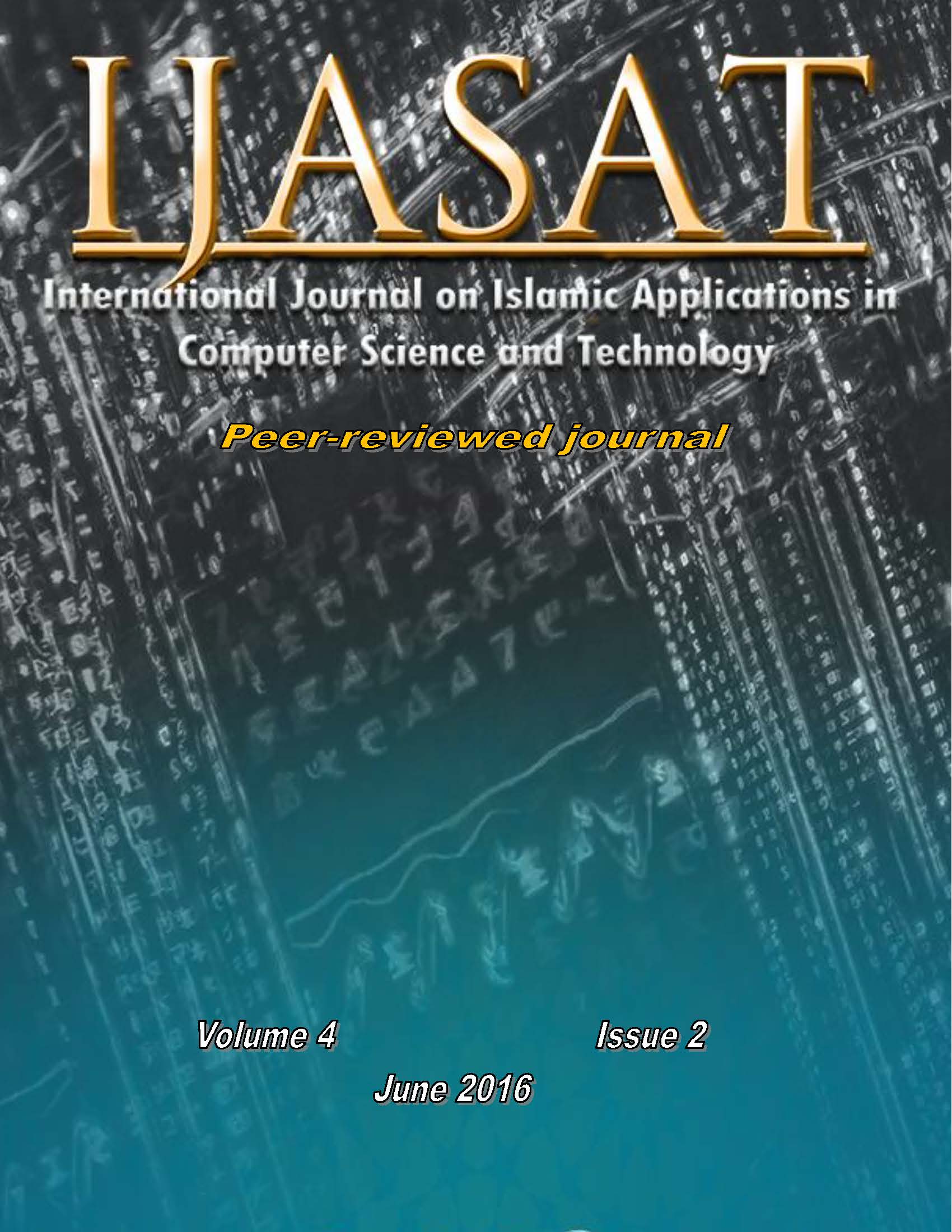Foreword
Abstract
By the grace of Allah, it is a great pleasure to introduce the first issue of the fourth volume of: The International Journal on Islamic Applications in Computer Science and Technology
The success and the welcome of the first three issues of this Journal by researchers from many countries, gave us great encouragement for continuing issuing in the due time.
This Journal is aimed at publishing original research papers in the field of Islamic Applications in computer science and technology. This field is catching a momentum in the recent years. As a Journal interested in this field, it is the first International Journal of its specific field. As research is growing in this field, we hope that this Journal will be a platform for researchers working in the field to publish their research.
This issue contains four papers. The first one is entitled: E-Tarteel : Visualizing Quranic Tajweed Rules. E-Tarteel is a web application that uses various types of tools and framework for developing an interactive e-learning tajweed so that it is able to provide self-learning for the student to learn tajweed by themselves. In E-Tarteel, the Tajweed categories that have been covered is the noon saakin rules, that is izhar halqi, ikhfa hakiki, idgham maal ghunnah, idgham bila ghunnah, and iqlab. This Tajweed engine works when the first Arabic character noon (ن) or tanween meets any character of Tajweed category and it will create the colored text of correct Tajweed. Hopefully the development of E-Tarteel will be able to be the new approach in assisting Muslims to understand and learn Tajweed during reciting Qur’an since the application can be accessed anywhere. Moreover, this E-Tarteel is suitable to be one of courseware for school teachers in assisting students to explore and learn Qur’an in an interactive way.
The second paper title is: Towards Using CMU Sphinx Tools for the Holy Quran Recitation Verification. This paper investigates the use of a simplified set of phonemes in an ASR system applied to Holy Quran. The Carnegie Mellon University Sphinx 4 tools were used to train and evaluate a language model on Holy Quran recitations that are widely available online. The building of the language model was done using a simplified list of phonemes instead of the mainly used Romanized in order to simplify the process of training the acoustic model. In this paper, the experiments resulted in Word Error Rates (WER) as low as 1.5% even with a very small set of audio files used during the training phase.
The third paper has the title of: A Conceptual Framework For Linked Open Islamic Knowledge. This paper presents the emerging vision and the need for Linked Open Islamic Knowledge, its requirements and foundations. The important challenges and limitations of the existing research landscape are highlighted in an attempt to analyze why it fails to meet the requirements of meeting the vision at hand. A conceptual framework that would functionally fulfill the Islamic LOD vision is presented. A brief insight is also provided to hint at the need and the role of Human Computation & Crowdsourcing (HC&C) methods and how they may facilitate the realization of the proposed vision.
The fourth paper is entitled: Perceptions of Dammam University Preparatory year Students' about the Uses of Social Networking to Support and enhance Teaching and Learning Processes. The goal of the present paper is to study for the introductory year students at Dammam University the Perceptions of the contribution of social networks to support and enhance teaching and learning processes. The research has been conducted during the academic year 2014/2015 on a sample of (281) introductory year students at Dammam University who correctly responded to the research tool. The study has also handled the mental image of the introductory year students (first year in university) towards the uses of the social networks and its applications in education. Based on the study results the two researchers have presented a number of recommendations and pedagogic applications and more of the future suggested studies.

